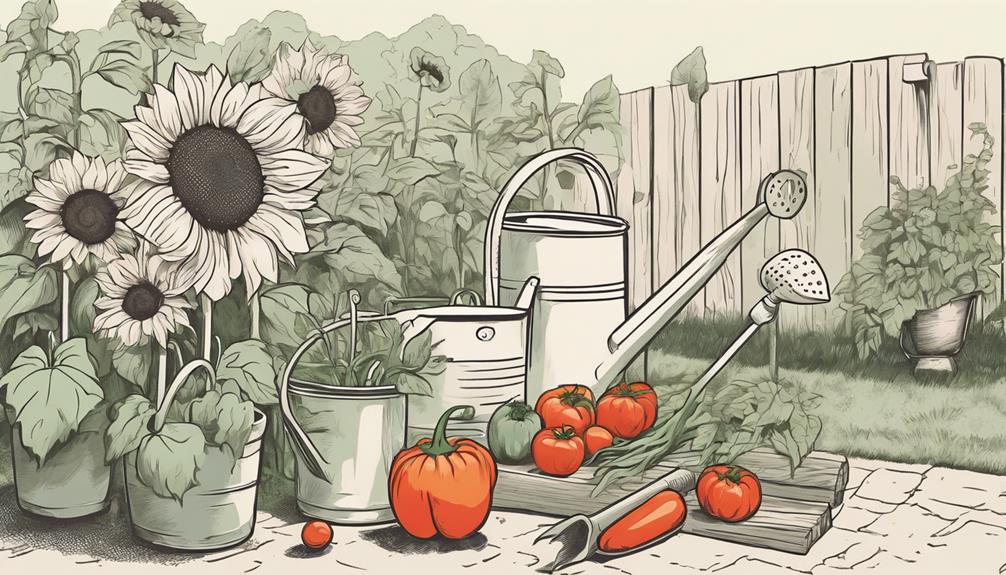See All: Backyard Farming
Free Backyard Farming Webinar…
You can grow food! This free webinar is for people who want the fastest and easiest ways to produce healthy and delicious vegetables, eggs, and meat. Because you know that growing your own food is like printing your own money…
Click Here To Watch The Free Webinar Now!
“I recently moved to a warmer climate and I want to start a backyard farm focusing on hot weather crops. Can you give me some advice on planning for this? I’m especially concerned about what types of plants are suitable, how to prepare the soil, and how to manage irrigation. Any tips for protecting plants from extreme heat would also be very helpful.” Thanks in advance, Mary, San Antonio, USA.
How Do I Plan For Hot Weather Crops?
Starting a backyard farm in a hot climate can be extremely rewarding, though it does come with its own unique challenges. Here are some key steps to help you plan for a successful hot weather garden.
Choosing the Right Crops
When planning for hot weather crops, it’s important to pick plants that thrive in high temperatures. Consider these heat-tolerant crops:
- Tomatoes: Varieties like Roma, Cherry, and Beefsteak are known for their resistance to heat.
- Peppers: Bell peppers, jalapeños, and habaneros all do well in warm environments.
- Squash: Both summer and winter squash are excellent choices.
- Eggplant: Loves heat and provides a decent yield.
- Okra: A staple in hot climates, okra is very heat-resistant.
- Sweet Potatoes: Not only tolerate heat but also need less water compared to other crops.
- Herbs: Basil, oregano, thyme, and rosemary all grow well in hot weather.
Preparing the Soil
Good soil is the foundation of any healthy garden, but it’s especially important in hot climates. Here’s how you can prepare your soil:
- Soil Testing: Start with a soil test to determine its pH level and nutrient content. This will inform you of what amendments are needed.
- Organic Matter: Add organic matter like compost or well-rotted manure to improve soil structure, water retention, and nutrient content.
- Mulching: Apply a thick layer of mulch around your plants. Mulch helps retain moisture, regulate soil temperature, and reduce weed growth.
- Cover Crops: Plant cover crops such as clover or rye grass in the off-season to improve soil health.
Irrigation Strategies
Managing water efficiently is crucial in hot weather gardening. Consider these irrigation strategies:
- Drip Irrigation: Use a drip irrigation system to deliver water directly to the plant’s root zone, minimizing evaporation and runoff.
- Soaker Hoses: Another option is to use soaker hoses, which distribute water slowly and evenly.
- Watering Schedule: Water in the early morning or late evening to reduce evaporation loss.
- Rainwater Harvesting: Collect rainwater in barrels and use it to irrigate your garden.
Protecting Plants from Extreme Heat
High temperatures can stress plants, so it’s essential to have strategies in place to protect them:
- Shade Cloth: Use shade cloth to provide temporary shade during the hottest parts of the day.
- Windbreaks: Plant windbreaks or install barriers to protect plants from hot, drying winds.
- Proper Spacing: Ensure plants are appropriately spaced to allow air circulation, which helps them withstand heat.
- Heat-Tolerant Varieties: Choose crop varieties specifically bred for heat tolerance.
- Liquid Seaweed Extract: Spray plants with liquid seaweed extract to improve their heat resistance.
Setting Up Your Garden Layout
Designing an efficient garden layout can greatly influence the success of your hot weather crops:
- Raised Beds: Raised beds improve drainage and can be tailored with the best soil mix for hot weather crops.
- Row Orientation: Align rows north to south to ensure even sunlight exposure.
- Group Plants by Needs: Group crops with similar water and sun requirements together to simplify care.
- Companion Planting: Utilize companion planting to create a balanced ecosystem and improve crop yields.
Monitoring and Maintenance
Regular monitoring and maintenance are essential to keep your garden thriving in hot weather:
- Regular Inspections: Check plants regularly for signs of stress, pests, and diseases.
- Pruning: Prune plants to improve airflow and reduce the likelihood of diseases.
- Fertilizing: Use balanced fertilizers according to the needs of each crop, being cautious not to over-fertilize.
- Disease Management: Implement crop rotation and use disease-resistant varieties to minimize problems.
Dealing with Pests
Hot weather can bring out a variety of pests. Here’s how to manage them:
- Integrated Pest Management (IPM): Use strategies like crop rotation, natural predators, and organic sprays to manage pests.
- Beneficial Insects: Introduce beneficial insects such as ladybugs and predatory wasps to control pests naturally.
- Physical Barriers: Use row covers and netting to protect crops from insects.
Harvesting Tips
Proper harvesting is the final step in ensuring your hot weather crops reach their full potential:
- Timing: Harvest crops early in the morning when they are most hydrated.
- Frequent Harvests: Regularly pick ripe produce to encourage further production.
- Proper Tools: Use sharp, clean tools to avoid damaging plants.
Final Thoughts…
Mary, it’s exciting that you’re venturing into backyard farming in San Antonio. Keep these tips in mind as you plan and care for your garden. Pay attention to selecting the right crops, preparing your soil, and managing water wisely. Remember, the success of your hot weather crops hinges on your preparation and ongoing care. Thanks for reaching out with your question, and happy gardening!
Return To: Backyard Farming
Free Backyard Farming Webinar…
Marjory Wildcraft: For 20+ years, Marjory has been a leader in survival & preparedness and wants to show you how to grow food in your backyard farm. This free webinar is for people who want the fastest and easiest ways to produce healthy and delicious vegetables, eggs, and meat. Because you know that growing your own food is like printing your own money…

